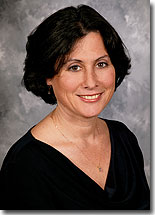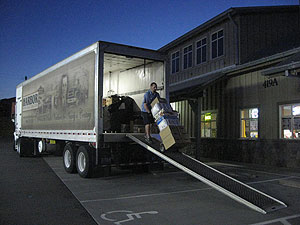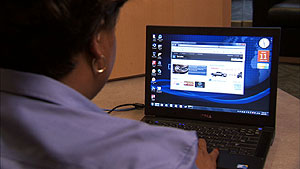REDMOND – Oct. 21, 2010 – Happy first anniversary, Windows 7 – it’s been a busy year.
Since the new operating system launched worldwide a year ago, Microsoft has sold more than 240 million licenses.

“I think Windows 7 has exceeded expectations,” said Gavriella Schuster, general manager of Windows Product Management. “We delivered what we said we were going to deliver, when we said we would deliver it, with very high quality.”
“I think Windows 7 has exceeded expectations,” said Gavriella Schuster, general manager of Windows Product Management. “People from the very beginning have had an optimistic forecast. I actually felt in the beginning we needed to temper expectations a bit… but a year later, we’re on track. We’re right where we thought we would be. It’s been a good year – it’s a year to celebrate.”
For months before its official launch, Windows 7 raked in positive reviews and feedback from customers around the world. The operating system also was released into one of the biggest economic downturns in recent history, yet it was quickly and widely adopted by consumers and businesses alike.
“We were in such a bad place economically; I didn’t know how that was going to play out. I was nervous,” Schuster said. “But I feel really good about how it’s all turned out.”
Consumers are buying Windows 7 PCs, and computer owners and businesses are upgrading as well. While the economy is still suffering, Windows 7 remains one of the top three projects IT pros are considering for their businesses, Schuster said.
“It’s just that important,” Schuster said. “That’s a good outcome.”
A year ago – on Oct. 22 – eager Microsoft engineers gathered to help then-Chief Financial Officer Chris Liddell “virtually” ring the NASDAQ stock market opening bell. On the one year anniversary of that day, Schuster said she’d like to raise her hat to the incredible work that engineers and teams across Microsoft did to get Windows 7 ready to meet the world.
“The primary win, the reason why Windows 7 is so successful, is because of the phenomenal engineering effort,” she said. “We delivered what we said we were going to deliver, when we said we would deliver it, with very high quality.”
A year of momentum
From the day it launched, Windows 7 began a steady climb, popping up on PCs around the world. In less than a year, Windows 7 gained more than 17 percent of the global operating system share worldwide.
Akfash Latibu, a Microsoft Most Valuable Professional (MVP), from Brunei Darussalam said he was “simply speechless” after first downloading the Windows 7 beta. MVPs are a community of technical experts and users of Microsoft products who actively share their knowledge both with other users, and provide independent and valuable feedback to Microsoft.
“After I signed in, (I saw) the desktop, the taskbar, aero features – wow,” Latibu said. “Windows 7 was filled with new features; what else can an IT pro ask for from Microsoft?”

Harbor Wholesale Grocery upgraded to Windows 7 this year on about 100 PCs. Making sure that employees have the technology they need is critical to providing the highest-quality customer service, which sets Harbor apart from its competitors, said the company’s computer operations manager.
Alex du Jong, a Windows 7 user and Microsoft MVP from Bergeijk, Netherlands, said his favorite features are the Windows Mobility Center, the resource monitor, the snipping tool, and the new interface with zoom function. “I tell people that Windows 7 is fast, and that it stays fast even when installing a lot of applications,” du Jong said. “I would recommend Windows 7 to everybody. The most important reason is that Windows 7 is a very responsive, secure and fun-to-use OS.”
There are now 1.2 billion Windows PCs worldwide, and as of September, 93 percent of new consumer PCs were running Windows 7. According to Lifehacker, Windows 7 users have a customer satisfaction rate of 94 percent.
“I use Windows 7 for work and personal – there is not much difference between those, by the way,” du Jong said. “Windows 7 just rocks, for me as a heavy user as well as for everybody else.”
‘Windows 7 provides the quickness we’re looking for’
Not only are consumers choosing Windows 7; businesses large and small are making the move to the new operating system. Today, nearly 90 percent of companies have either moved or started their move to Windows 7.
One of those that already made the move is Harbor Wholesale Grocery, a full-service grocery distribution company with 300 employees business based in Tumwater, Wash. The business upgraded to Windows 7 this year and immediately reduced help desk calls and increased computing security, said Tony Caufield, computer operations manager for Harbor Wholesale Grocery.
Harbor Wholesale Grocery sells more than 10,000 items, including fresh food, beverages, cigarettes, and supplies to more than 2,000 customers in Alaska, Idaho, Northern California, Montana, Oregon, and Washington. About 1,000 of those customers are getting one delivery a week, including some large, detailed orders.
“There are a lot of transactions so it’s critical for our systems to be able to get customers’ orders in, to process credit, and to route our trucks,” Caufield said. Making sure that employees have the technology they need is critical to providing the highest-quality customer service, which sets Harbor apart from its competitors, he said.
Caufield said the company loved the performance of Windows XP, but the operating system had some security management challenges. Upgrading to Windows Vista alleviated some of those security issues, but Caufield then found that the company’s time clock application and another application used by the sales team both required Windows XP to run.
This spring, with the help of Microsoft partner Denali Advanced Integration, Harbor found a solution that included virtualizing some of its desktops to be compatible with key applications. Harbor just completed its move to Windows 7 from Windows XP and Windows Vista on roughly 100 PCs.
“By moving all our users to Windows 7, we’re delivering on our promise to provide a high-performing, high-security computing environment, without having to upgrade any hardware. And by using Microsoft virtualization technologies, we’re establishing an easy, cost-effective way to support key applications,” Caufield said.
Automotive giant General Motors (GM) is well into the process of upgrading its PCs to Windows 7.
“We have 22,000 employees on Windows 7 and we’ll get up to about 80,000 by year end,” said Ken Michel, director of online infrastructure and local area networks for GM Information Technology. “We’re about designing, building, and selling cars. We’re about being quick to market and Windows 7 provides the quickness that we’re looking for.”
GM has more than 200,000 employees, and is present in 120 markets worldwide. The company manufactures brands such as Cadillac and Chevrolet, as well as regional brands such as Opel in Australia.
What’s next?

“We’re about being quick to market and Windows 7 provides the quickness that we’re looking for,” said Ken Michel, director of online infrastructure and local area networks for GM Information Technology. The company will have 80,000 employees using Windows 7 by year’s end.
Pushing Windows 7’s first-year momentum into the second year and beyond will require not only continued consumer success, but also enterprise success, which means getting more businesses to make the upgrade, Schuster said. “It is very important. Enterprise is over half of our Windows revenue,” she said.
However, Microsoft is focused not just on growing enterprise revenue, but also on improving customer satisfaction. “It’s super important that they have a great, grounded experience from the start,” Schuster said.
IDC analyst Al Gillen, program vice president, system software, has spoken and written extensively about businesses migrating to Windows 7. He said it’s a major effort for most companies to make such upgrades, so it’s a big deal when they do. “For most business customers, a migration is not something that happens in a period of weeks or months,” Gillen said. “The average customer doing an operating system deployment in conjunction with a new PC deployment usually takes a couple of years to get through.”
However, virtualization and cloud computing are making such deployments more nimble than ever, he said, adding that one thing accelerating the move to Windows 7 is the waning “life cycle” for Windows XP (support for the operating system will end in 2014).
Schuster said Windows 7 continues to prove itself, both to consumers and to businesses. There are more competitors in both markets than there ever have been before, she said.
“Users have more choices than they ever have, which is great, but it means we have to work harder for our share of voice out on the market than we’ve ever had to before,” Schuster said. “But I still think people are pretty excited about it.”
Learn more about Windows 7.
Go behind the scenes of Windows 7, and catch up on news and events from the operating system’s banner first year.




